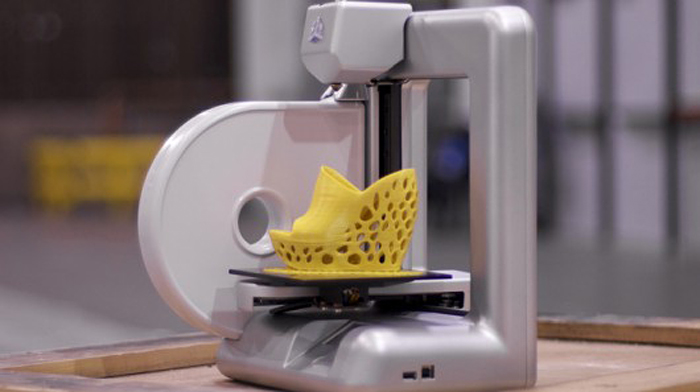3D printing was all the rage at the Consumer Electronics Show in Las Vegas that I attended this month. One stand-out was Cubify's consumer-targeted desktop printer called Cube that is cheap enough for home use (retails for around $1200).

Imagine the ability to download any product data, modify it how you want to, and print it right there at home. They even have a community set up of designers and experts to help you "express yourself in 3D" and achieve what you imagine. Cubify had a lot of examples of the types of products that could be printed using their printers including an incredibly flexible mesh that they printed as a glove that was so soft to wear it almost took on fabric qualities.
My favorite were the full scale women's shoes that just happened to be my exact size. So of course I tried them on. Hot off the printer with virtually zero touch-ups or assembly, these heels held my weight and were actually quite comfortable (well, as comfortable as 4-inch heels can get). One pair even included a slidable compartment to store your phone (although, I'm still not sure how I would answer it even with a blue tooth headset). Here's a look at the 3D-printed footwear in action. This video was taken by the folks at Cubify at their booth that they generously shared with me. Thanks Cubify!
Info on 3D printing: cubify.com 2012 Consumer Electronics Show: cesweb.org Images and more info at The Verge and Gizmodo